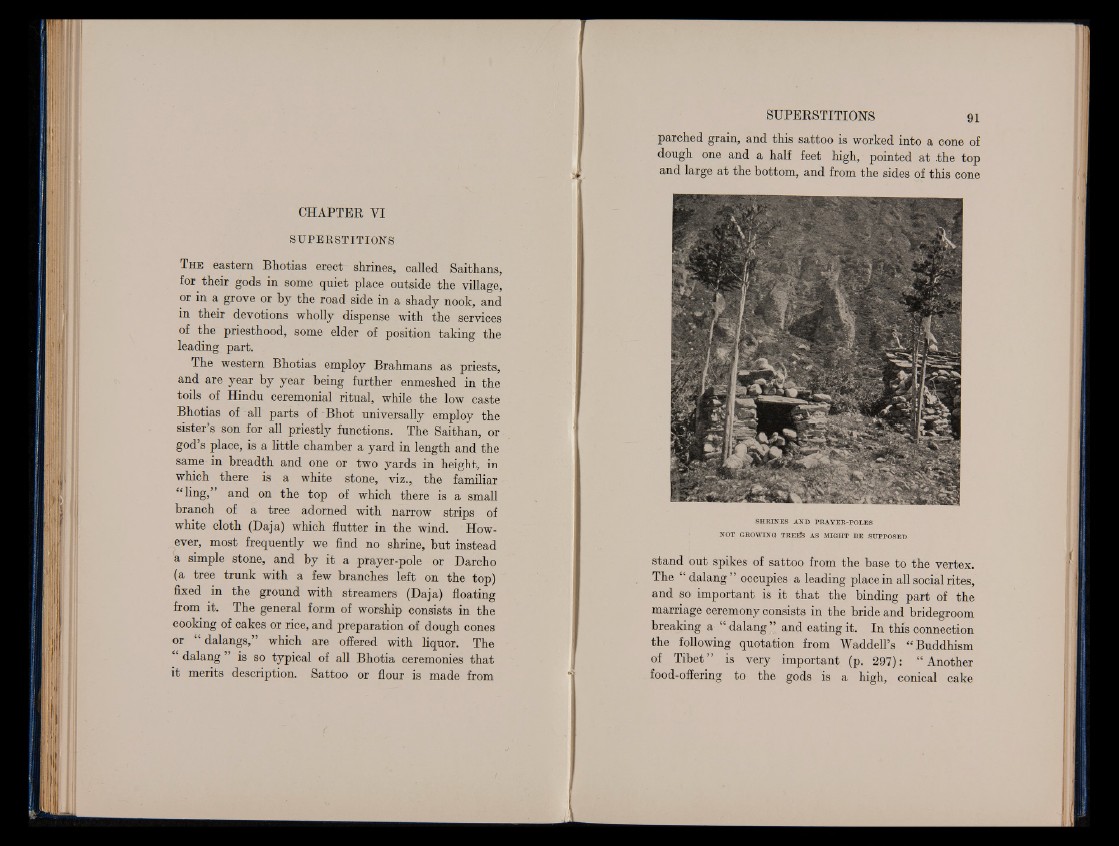
CHAPTER VI
SUPERSTITIONS
T h e eastern Bhotias erect shrines, called Saithans,
for their gods in some quiet place outside the village,
or in a grove or by the road side in a shady nook, and
in their devotions wholly dispense with the services
of the priesthood, some elder of position taking the
leading part.
The western Bhotias employ Brahmans as priests,
and are year by year being further enmeshed in the
toils of Hindu ceremonial ritual, while the low caste
Bhotias of all parts of Bhot universally employ the
sister s son for all priestly functions. The Saithan, or
god’s place, is a little chamber a yard in length and the
same in breadth and one or two yards in height, in
which there is a white stone, viz., the familiar
“ ling, and on the top of which there is a small
branch of a tree adorned with narrow strips of
white cloth (Daja) which flutter in the wind. However,
most frequently we find no shrine, but instead
a simple stone, and by it a prayer-pole or Darcho
(a tree trunk with a few branches left on the top)
fixed in the ground with streamers (Daja) floating
from it. The general form of worship consists in the
cooking of cakes or rice, and preparation of dough cones
or “ dalangs,” which are offered with liquor. The
“ dalang ” is so typical of all Bhotia ceremonies that
it merits description. Sattoo or flour is made from
parched grain, and this sattoo is worked into a cone of
dough one and a half feet high, pointed at .the top
and large at the bottom, and from the sides of this cone
SHRINES AND PRAYER-POLES
NOT GROWING TRE1Î3 AS MIGHT BE SUPPOSED
stand out spikes of sattoo from the base to the vertex.
The “ dalang” occupies a leading place in all social rites,
and so important is it that the binding part of the
marriage ceremony consists in the bride and bridegroom
breaking a “ dalang ” and eating it. In this connection
the following quotation from Waddell’s “ Buddhism
of Tibet” is very important (p. 297): “ Another
food-offering to the gods is a high, conical cake